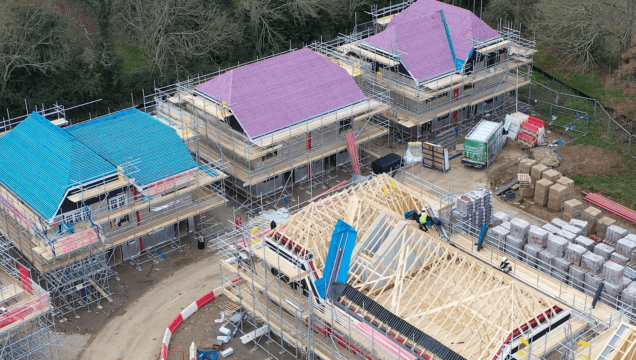

In January, the Government issued their response to the Future Homes Standard, and whilst a lot of clarity is yet to be confirmed, it does look like there will be a 31% carbon emission reduction, more stringent air-tightness requirements, and the Fabric Energy Efficiency Standard will be retained leading to lower u-values. These are all areas that Pinewood Structures can assist with in a simple way, using our existing product line.
Timber frame is a naturally well insulated building material, meaning that you can hit lower u-values with thinner wall thicknesses than masonry construction. This will help with hitting the expected lower u-values required by new Part L, and help with the reduced carbon emission target. In addition, timber frames have an inner vapour control layer, that acts like a big air seal, meaning that air-tightness below 5m2/h.m2 @ 50 Pa (the likely requirement of the new Part L) is straight forward to achieve in timber frame. Furthermore as the requirements tighten further towards 2025, with timber frame there is minimal change in the wall build-up meaning that builds are consistent without significant loss of floor area, or bigger footprints.
Pinewood Structures have a range of offsite timber frame options, including closed panels to help you achieve the upcoming Part L changes as we move towards the Future Homes Standard, and our expert team would be happy to discuss in more detail. Get in touch to discuss how we can help your next project.


